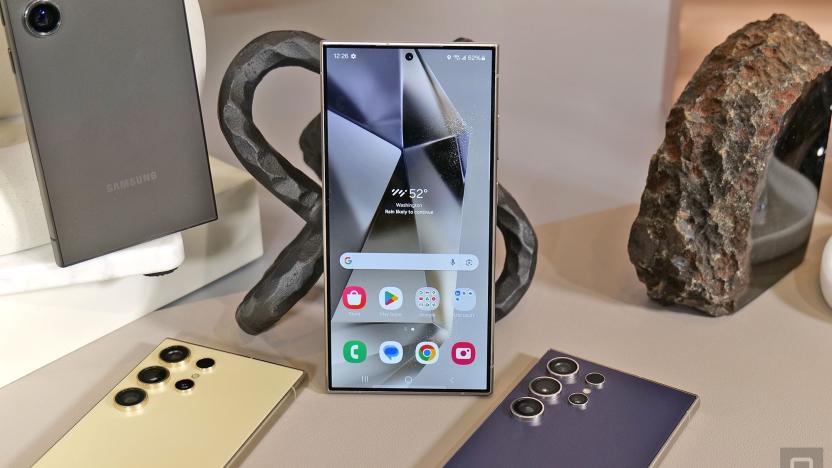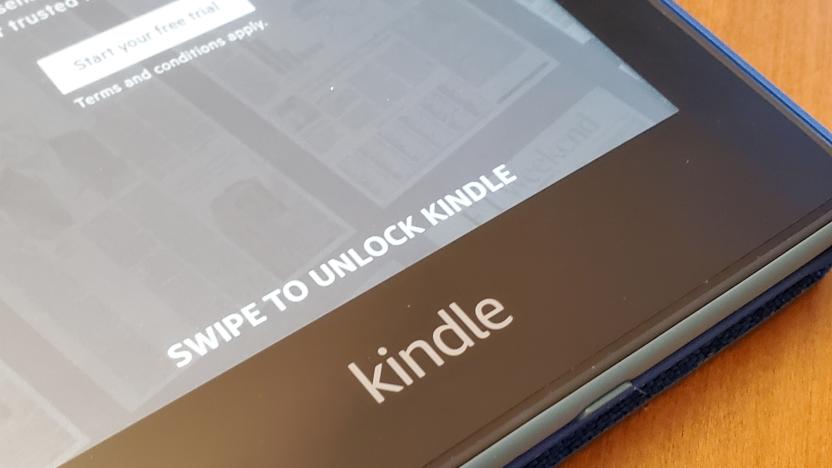mobi
Latest

Samsung Galaxy S24 Ultra hands-on: A fresh titanium frame combined with a big bet on AI
Packing a higher-res camera, a brighter screen and a whole host of new AI features, the Galaxy S24 Ultra is setting the bar for every other flagship phone due out later this year.

Amazon's Kindle will finally add ePub support
Amazon’s e-reader will support the ePub format.

BMW, Ford and GM want to bring blockchain to your car
Seemingly every company is determined to hop on the blockchain bandwagon, and that includes automakers. BMW, Ford, GM, Renault and and a string of tech partners (including Bosch and IBM) have formed the Mobility Open Blockchain Initiative, a group that hopes to use blockchain's distributed, decentralized ledger technology across many aspects of your experience, even when you're not driving. They hope to create standards that allow for secure payments for everything from autonomous car hailing to congestion charges to ridesharing.

Eyefi's new service sends your camera's photos to the cloud as soon as you shoot
There are plenty of cameras that send their photos to your phone, but you frequently have to transfer those pictures yourself -- and it's another hassle to get the pics to other devices. Eyefi thinks it can solve these headaches by launching its own online service, Eyefi Cloud. If you're using one of the company's WiFi-equipped Mobi cards in your camera alongside new Android and iOS apps, any photos go both to your mobile device and Cloud right after you've hit the shutter button. You only need a browser to manage your shots, so you're not stuck if you want to see your photos on a new PC.

Eye-Fi's Windows desktop receiver means you can say goodbye to the SD-card reader
We've always been fans of Eye-Fi's wireless cards, but the fact that we still used an SD-card reader to pull the files to our desktops always rankled. Thankfully, the company is addressing that gripe with the Windows Desktop Receiver for the Eye-Fi Mobi, which launched earlier in the year. The new app will give users a choice between pushing pictures to their smartphone or desktop, presumably with far more ease than on the previous Class 10 X2. All you need to do here, we're told, is enter a 10-digit activation code and watch your devices wirelessly pair, pushing images right where you want 'em. The software will remain free so long as it's in beta, with an OS X version currently in the works -- so if you fancy giving it a try, head on to the download link and see what your experience is like.

Eye-Fi's Mobi SD card sends images straight to a phone or tablet
When Eye-Fi first launched its wireless SD cards back in 2006, most of us weren't carrying smartphones, much less tablets. At the time, the idea was to send your photos straight from your camera to your PC, where you could run slideshows or upload them to the cloud (if you were already into that sort of thing). Lately, though, Eye-Fi has been forced to rethink its product: the company just announced the Mobi, a $50 Class 10 card that sends images directly to your mobile device, bypassing the computer altogether. Designed for people already used to storing pics on phones and tablets, it works with a free iOS / Android app that acts as an image viewer. To set it up, you enter a 10-digit activation code included in the packaging, which you can use with as many gadgets as you like. After that, the card will continuously send photos and video to your device. And because the Mobi is a hotspot unto itself, your gear doesn't all need to be on the same network, or even in range of a router. The Mobi is available today, priced at $50 for 8GB and $80 for 16GB. For those of you who expect to do some heavy-duty editing, you can still buy Eye-Fi's existing X2 cards, which send images to PCs, and can handle both RAW and JPEG. Additionally, those pro-level cards can be configured to send different file formats to different locations. If that seems like overkill, though, the Mobi might be the better option -- it's not like you can't eventually get those photos off your phone, right?

Apple's original iPhone marketers pondered such names as TriPod, Mobi and iPad
Ken Segall, Apple's former advertising head who coined its iProduct naming convention, told students at the University of Arizona that they could be pocketing a "TelePod" right now instead of an iPhone, according to 9to5Mac. That was among the now-strange-sounding names Cupertino pondered for the device, since one of the early concepts was a phone based on Apple's star product at the time, the iPod. Other names considered were "Mobi" and "TriPod," which was bandied about due to the device's three separate functions (phone, internet and iPod), along with iPad -- perhaps because we now know that the original iOS testbed was a tablet. In retrospect, it seems like a good thing that Apple rejected those choices ("let me show you that video on my TriPod"), but we can imagine some fur flying during marketing meet-ups to choose the ubiquitous name.

Lenovo to launch Tianji iBook EB-605 e-reader?
Looks like everyone wants a slice of that steaming-hot e-reader action these days. Right in front of us here is the Tianji -- or in our language, Phecda, a distant star -- iBook EB-605, which is purported to be launched by Lenovo at some point this year (and we first heard about such plan back in December). Features include a 6-inch electronic ink display, Samsung ARM 400MHz processor, newspaper subscription, music player, picture browser and support for a variety of digital book formats including EPUB (hooray!) and MOBI. ZOL also spotted the SIM card-like icon at the top, which might suggest a thing or two about its wireless capabilities, and estimates a price tag of under ¥2,000 ($293). No word on international release yet, but hey, the more the merrier either way! Update: eagle-eyed reader charlied spotted this e-reader in its no-frills form from Oaxis. The good news is that WiFi and SD card slot are featured as well, but no mention of a SIM card slot so ZOL's probably wrong about that icon. Shame.

Kindle DRM hacked to allow protected Mobipocket ebooks
We knew the Kindle's DRM would be cracked the minute we heard about it, and it looks like the first chink in the armor is here courtesy of Igor Skochinsky: he's discovered the algorithm the Kindle uses to turn regular Mobipocket books into Amazon's proprietary .azw format. The hack involves replacing a Mobipocket file's PID with one generated from your Kindle's serial number, and then setting a Kindle-specific flag that allows it to be opened. Igor's posted a couple little Python scripts to handle both of these tasks for you, and it looks like sites like Fictionwise already support the hack. That's all well and good, but we're still waiting patiently for the day when we can tether to that free EV-DO.






